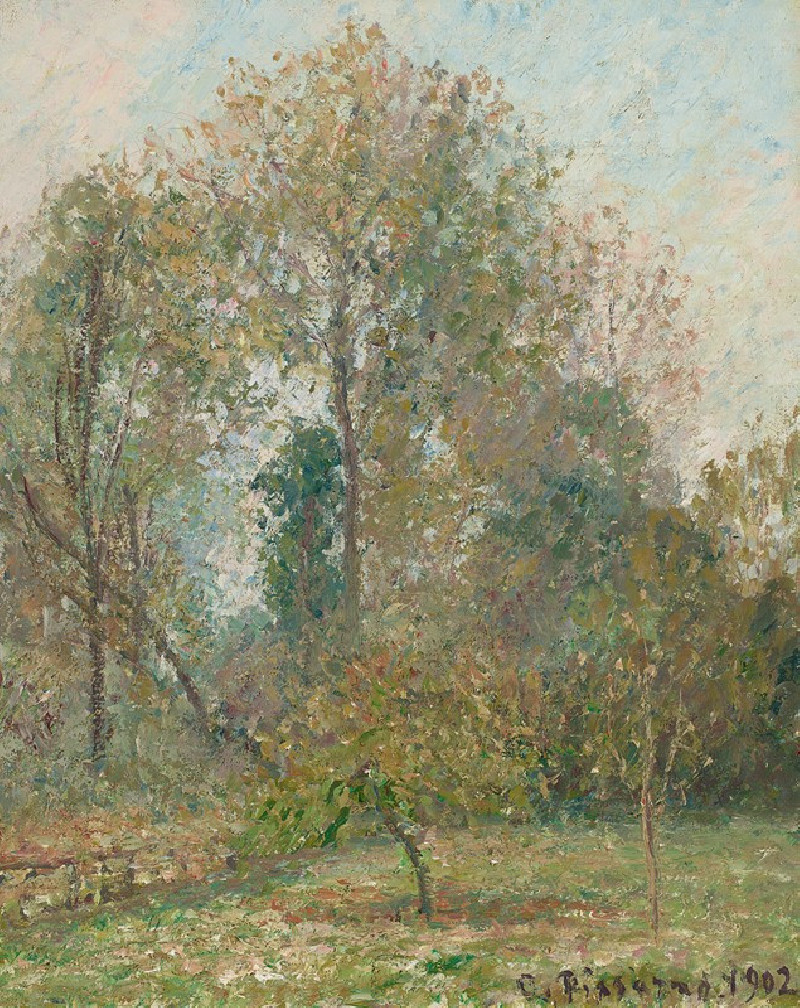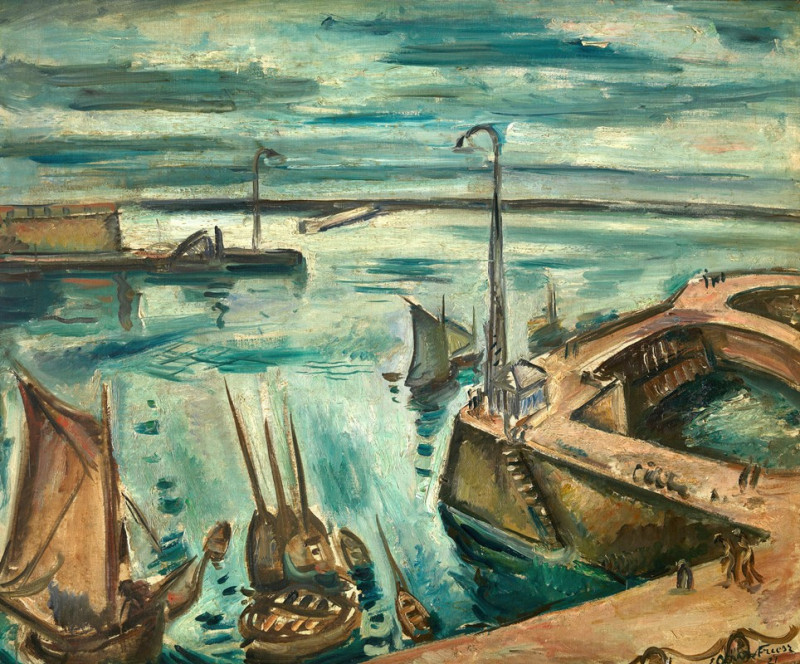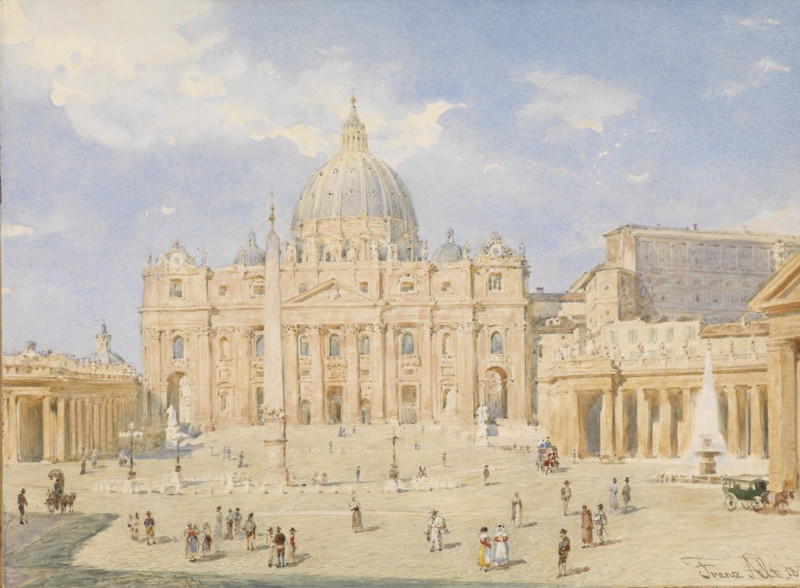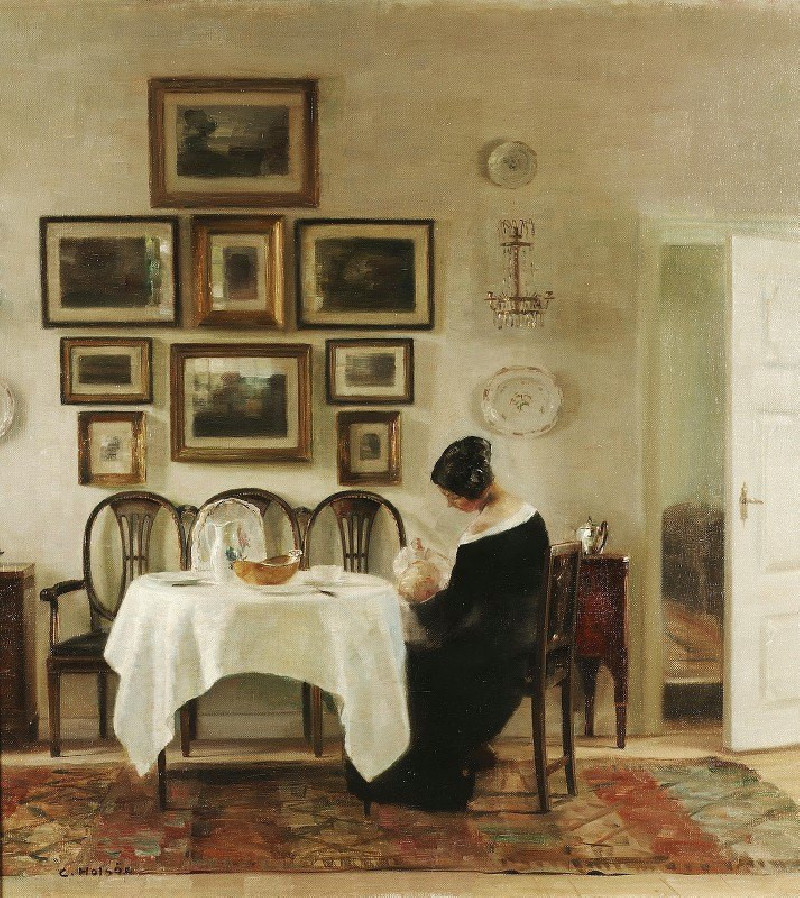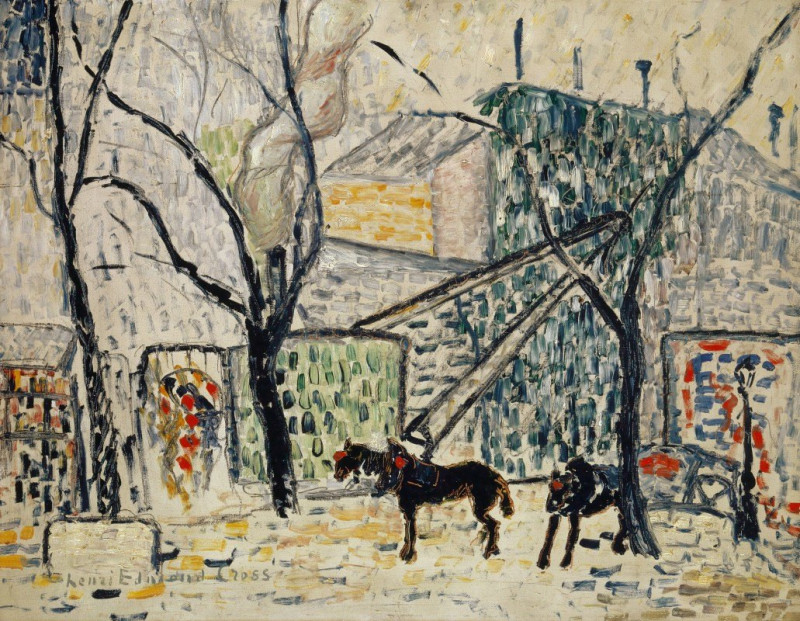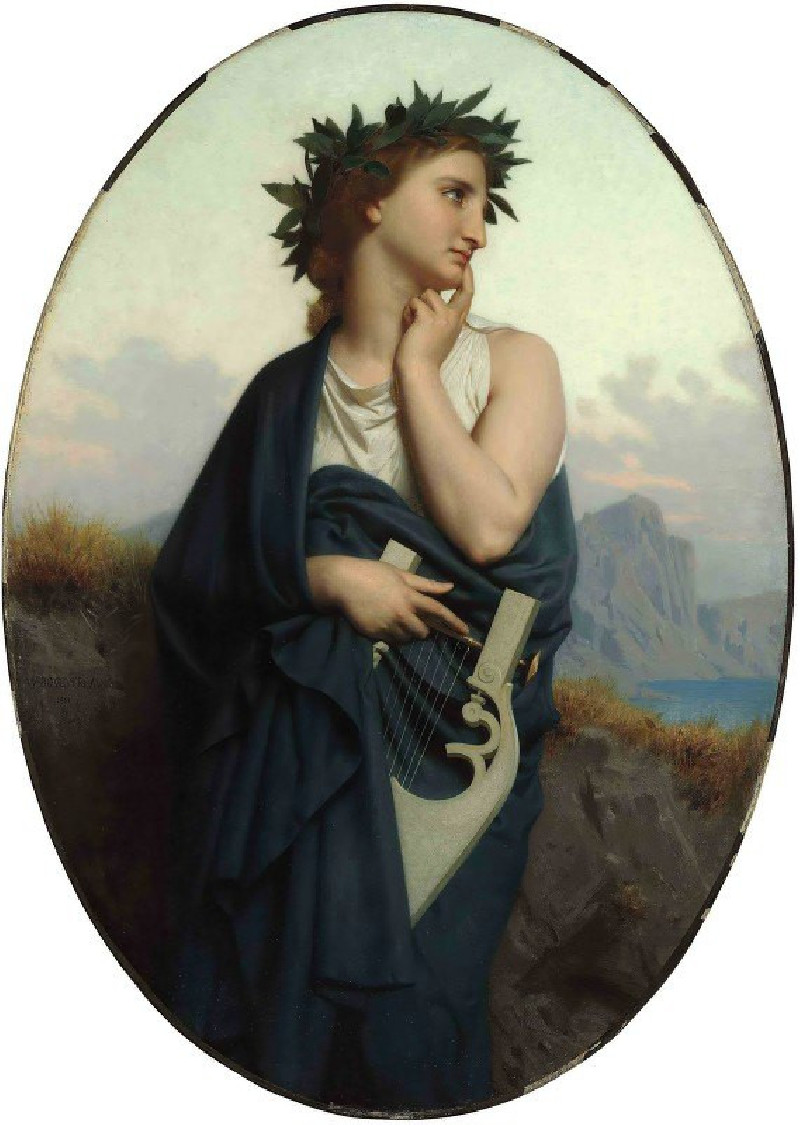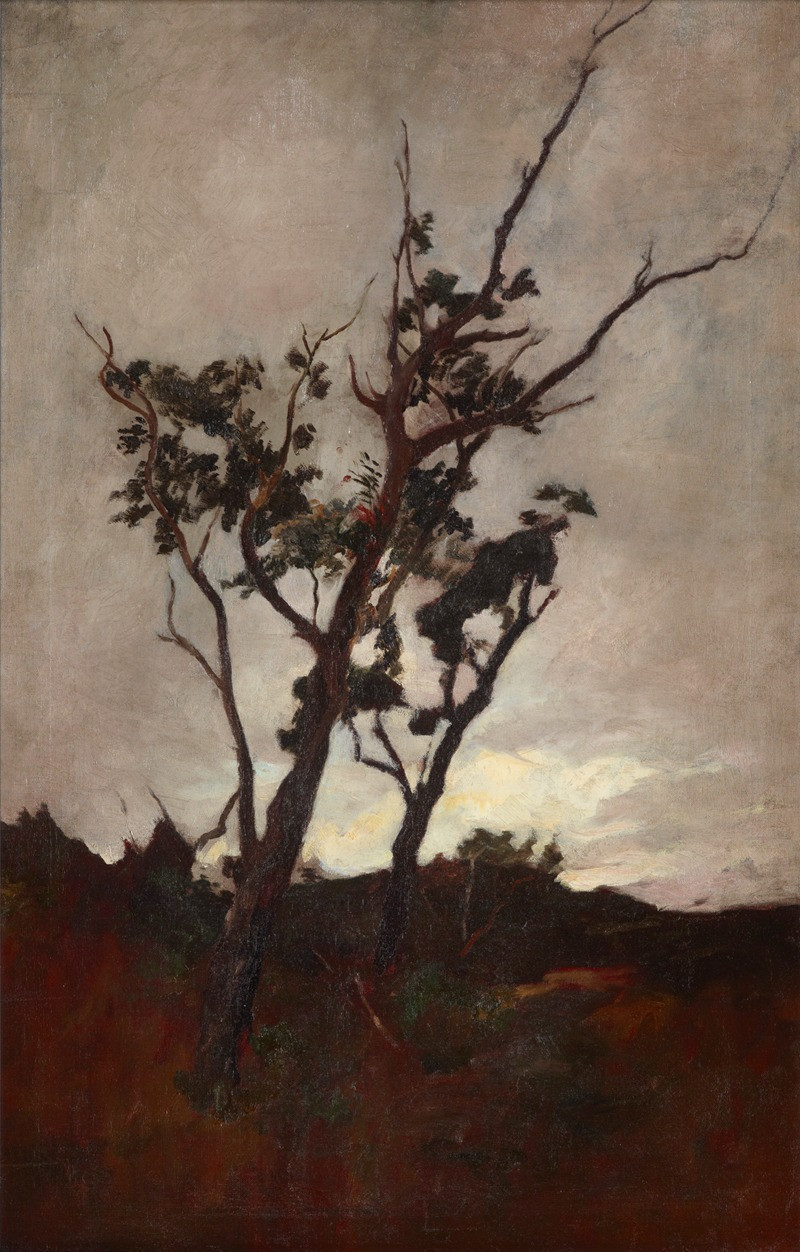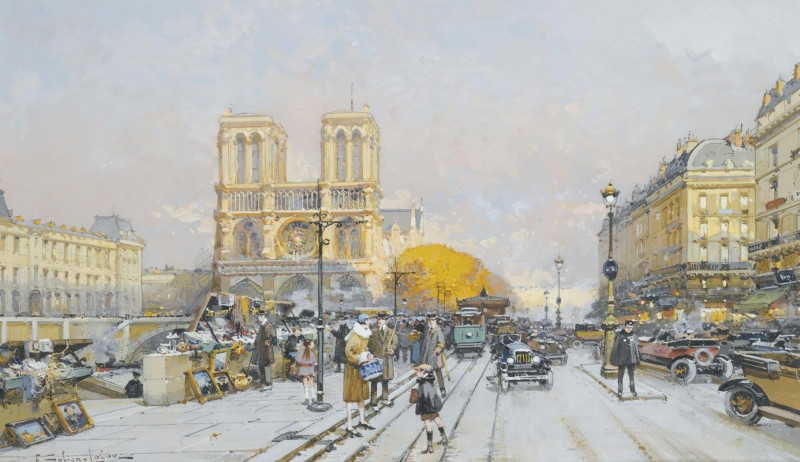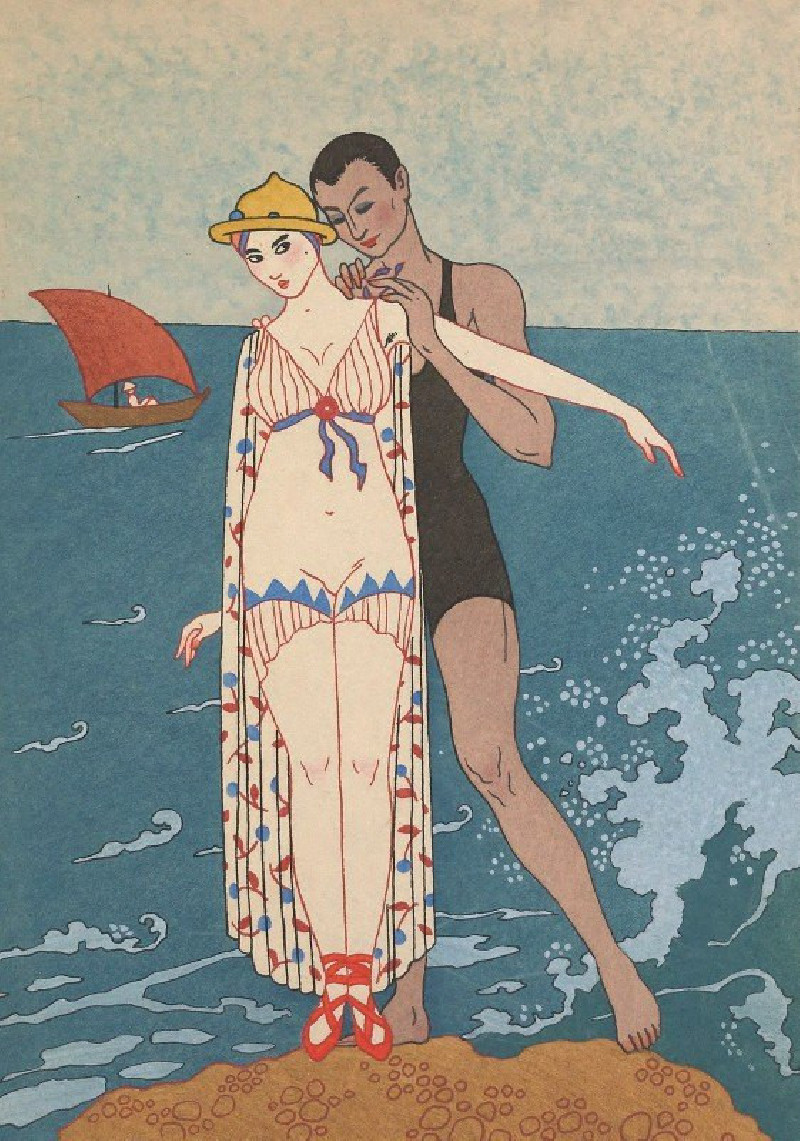Gelée blanche à Eragny (1902)
Technique: Giclée quality print
Recommended by our customers
More about this artwork
Welcome to a serene vision of winter captured in "Gelée blanche à Eragny" (White Frost at Eragny), a sublime painting by the master Impressionist, Camille Pissarro. Painted in 1902, this artwork offers a glimpse into the peaceful solitude of the countryside during the chill of winter.In this painting, Pissarro portrays a landscape tranquil in its wintry guise. The scene is set in Eragny, the village where Pissarro spent the last two decades of his life, finding endless inspiration in its picturesque settings. Here, the artist focuses on a clump of robust trees, their branches thick with the weight of white frost. The trees stand prominently against a soft, pastel sky that shifts subtly from gentle blues to muted grays, suggesting the cold, crisp air of early morning.Pissarro's technique is distinctly Impressionistic, characterized by loose, textured brushstrokes that convey the fleeting effects of light and color. The frost is rendered through a delicate application of white and pale blues, mingling with the greens, browns, and yellows of the trees’ leaves—a testament to Pissarro's skill in capturing the essence of the season.The ground, speckled with shades of green, brown, and white, leads the viewer's eye through the composition, enhancing the feeling of depth and openness in the landscape. This portrayal is not just a visual experience but also an atmospheric one, inviting the viewer to feel the quiet and crispness of the winter air.
Delivery
Returns
Blessed are they who see beautiful things in humble places where other people see nothing. — Camille Pissarro
Camille Pissarro (1830-1903) was born on St.Thomas (now the US Virgin Islands) to a Portuguese father and a Dominican mother. He went to Paris to study art at Ecole des Beaux-Arts. He was an early pioneer of pointillism and neo-impressionism and later became a mentor of many famous impressionist painters including Cezanne, Manet, Renoir, and Gauguin. His paintings depicted rural and urban French landscapes and lifestyle. Many of his works politically captured images of peasants and laborers. Today, he is considered the father of impressionism.

